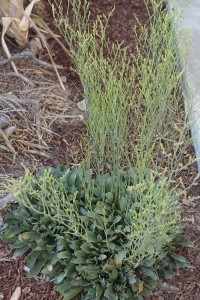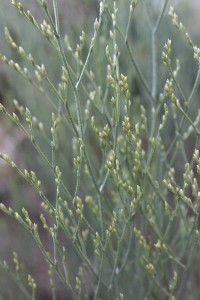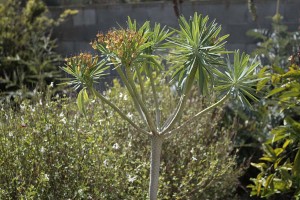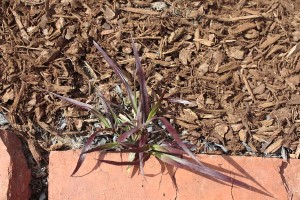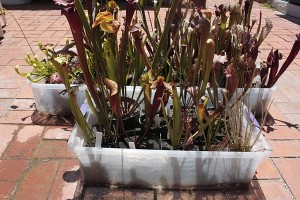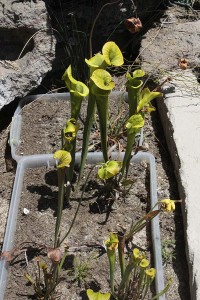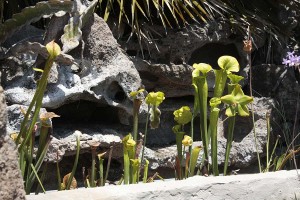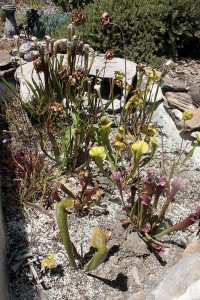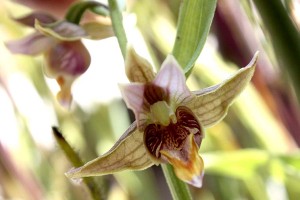Let me share my favorite garden design from this year’s San Diego County Fair. If I tell you that I grew up on Sunset Magazine and that I frequented the Sunset demonstration gardens at the Los Angeles County Arboretum in the 1970s, you can see why a garden like this pushes my buttons. This space my North County’s Akana Design really embraces the Sunset aesthetic of combining modern design with livable outdoor spaces. (Ignore the ugly black shade cloth background that’s been draped over the plastic white lattice that the fair provided for their displays.)
I’ve been known to grouse about outdoor spaces where the garden has been sacrificed at the expense of adding yet another room to a McMansion, but the plants in this design seemed to be integrated into the results and not so much an afterthought. This space features a compact eating space on gold-colored decomposed granite, with a whiter stone mulch used for most of the growing areas. Two simple wooden walls provide some protection, at the same time they define the space and provide a backdrop for plantings.
A single lounge chair sits off to one side at the end of a DG walkway. A stone in front serves as an ottoman. When the chair is stored indoors for the winter, the ottoman stone could serve as an accent at the end of the little path. The seat is surrounded by fragrant rosemary and cleveland sage, as well as plants that provide visual interest and variety.
This detail shows some of the plants used to provide textural interest: lomandra, phormium, aeonium, tea tree (I think), and–uh oh–Mexican feather grass. Well I had to find something about the plantings to critique. Might I suggest using the native Aristida purpurea instead? Sorry to quibble too much. Overall I thought it was a really successful presentation.
Among the other displays, Pond-Ology featured a little yoga deck in the middle of a tropical paradise. It pushed my Sunset buttons a bit too.
I’m not into making a zoo of captive angels in my back yard, but I thought this menagerie by Blue Pacific Landscape Design was well done. I especially like how the color of the blue pots echoes through the plantings around them. The cascading pink geraniums provide nice contrast. Pots full of blue flowers would have been way too matchy-matchy.
At this garden show, as at many others these days, one of the big themes is green walls. Anandascapes incorporated this wall into a pretty modern display.
Take four green walls and attach them side to side and you have a green obelisk. The Good Earth Plant Co. and Greenscape Building provided this 3D version of the flat green wall.
You could walk around it and look in detail at the various succulents that made the planting possible.
Living in a near-desert I’m still not convinced that green walls make a whole pile of sense. Why not plant an easy-care vine instead? But you’ve got admit they’re spectacular, and “spectacular” works well at a noisy county fair with lots of distractions.
In my next and final post from the fair I’ll show you some of the things that interested me most: Plants!

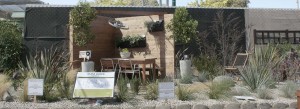
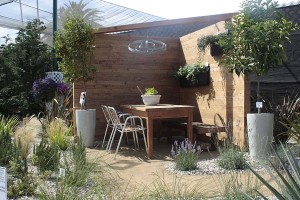
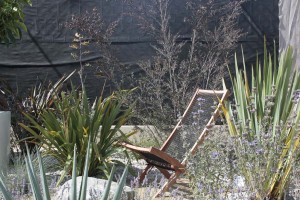
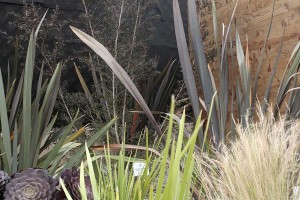

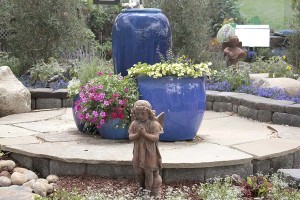
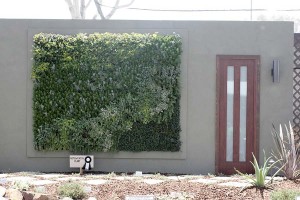
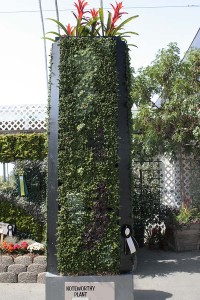
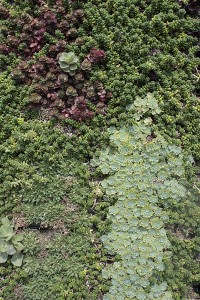

















 As such it’d be a good writeup of species I’m using to seeing in my area seen through the filter of someone working in the Los Angeles/Orange/Riverside County region of Southern California.
As such it’d be a good writeup of species I’m using to seeing in my area seen through the filter of someone working in the Los Angeles/Orange/Riverside County region of Southern California.

